101 Hours in a Zeppelin
Ernst August Lehman and the Dream of Transatlantic Flight, 1917
by Robert Stephan Pohl
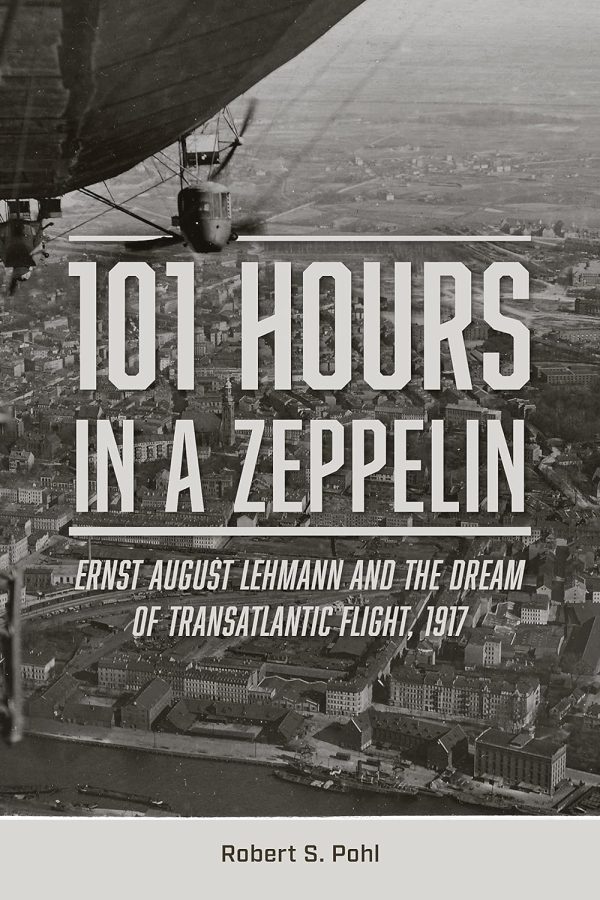
“Others looked even farther ahead, past whatever fighting that would inevitably still occur. To a future where there was, once again, unhindered international travel, a world where the rich and powerful were prepared to pay dearly for a comfortable means of reaching their destination. A world where a fleet of giant airships crisscrossed the globe.”
This fascinating book is based upon the letters of the author’s grandfather, physics professor Robert Wichard Pohl (1884-1976) who had the opportunity to participate in a number of airship flights during the First World War in the course of his professional work outfitting German army airships with radio direction finding equipment. On the record-breaking flight of LZ-120, the main focus of this book, he was only a passenger and thus had leisure to write a particularly long letter to his mother. That letter along with many others were later discovered by his son, who gave them to his son, who would base this book upon them.
Before the author turned himself into “a self-taught historian” (with five books to his credit) he was a computer programmer and one can well imagine that the particular skill set of running down If/Then scenarios to their conclusion is useful for whittling a bunch of disparate parameters into a functioning whole. It took him 15 years to do it, not least because his father first had to transcribe the letters his dad had handwritten in a script that was cutting edge modern in his day but that his grandson could no longer read (think: cursive version of the Fraktur style you may know from old German books).
The E.A. Lehman of the title was Germany’s foremost airship captain, and if his name rattles around in your memory it may be because he perished on the Hindenburg in 1937 (he was a passenger).
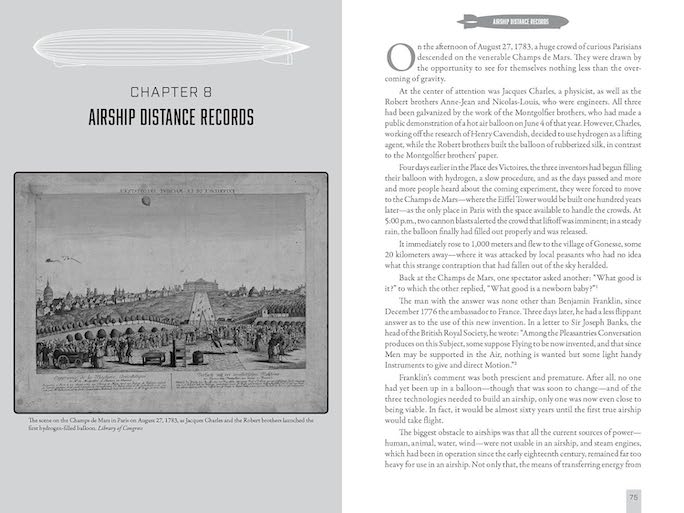
In seventeen chapters the story of this particular flight is told in the context of airship travel in general. An Appendix and 12 pages of Endnotes will have you busy with your bookmarks, and there are suggestions for further reading and a good Index. A good map should be to hand, too. The chapters following the “101 Hours” journey of the book’s title are written in the present tense, and as we follow Pohl’s letters to his mother, we are given history and geography lessons as well as the details of the crew’s existence; personal hygiene and the method of preparing the one hot meal—pea soup, fermented as it happened, with horrible effect. It had to be consumed while standing on the narrow alloy gangplank above the keel and canvas below the bags of hydrogen.
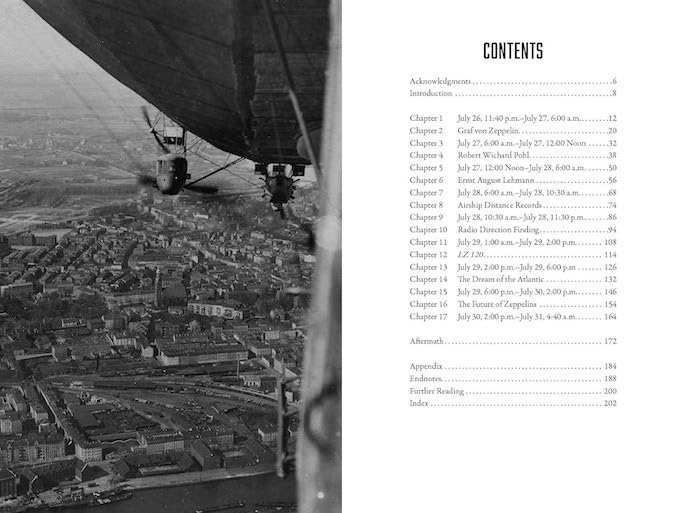
Although the vast Zeppelin industrial empire is now based at Munich, its registered office along with a Zeppelin Museum remain at the town of Friedrichshafen on the shores of the Bodensee. With 10,000 employees the companies are truly a “swords into plowshares” organization, with products ranging from precision medical instruments and watches, through ZF transmissions, to heavy earth-moving machinery.
The Zeppelin family had taken their name from the town of Zepelin and had prospered as part of the royal court of Württemberg in that still pre-unification Germany, and Ferdinand A.H.A. von Zeppelin was born in 1838. After two years of technical training he joined a military school and went into the army which granted him leaves of absence for university studies and also dispatched him to the US in 1863 to embed himself in the Union Army during the Civil War (while wearing his Württemberg uniform). The ballooning experiments of T.S.C. Lowe and President Lincoln’s adoption of balloons as aerial recon platforms interested Zeppelin, and he furthered that interest during the Franco-Prussian War of 1870. Upon retiring from the military in 1891 he took his and his engineering colleague Theodor Kober’s proposals to the Prussian War Ministry. They were rejected, but a patent was granted for a “dirigible airtrain” in 1895, leading to the founding of a corporation that attracted investment of one million marks.
Along with all the relevant airship developments of the time we are introduced to Professor Pohl’s scientific work in the field of picture transmission and x-rays and their application in the wartime use of airships. A key development is something the book explores in some detail, Radio Direction Finding (RDF), which takes us to the purpose of LZ120’s 27th flight, in July 1917: a really long continuous run—of 101 hours, thereby besting the existing record by 1 hr—to observe naval activity in the Baltic Sea.
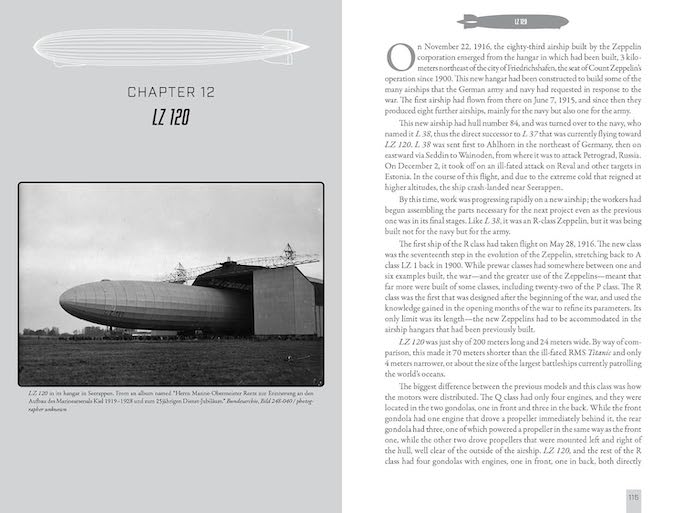
It’s past the half-way point in the book before we get to the interesting technical details of this R Class of the seventh generation of Zeppelins. These could easily boggle the mind, and lead to tie-twiddling and finger-wiggling, but Pohl has given us over ten pages of fascinating and very readable information. Almost 200 meters long and 24 meters in diameter, LZ120 was about the size of the contemporary battleships and two thirds the length of RMS “Titanic”, constructed of duralumin (95% aluminum 5% copper and other elements) framework covered by cotton canvas which was translucent. Four gondolas slung beneath held six Maybach 6-cylinder engines of 240 hp and 23 liters each, the amidships gondolas having propellers fore and aft. These engines of 400 kilograms each were supported by 23,000 liters of gasoline, and LZ120 could achieve 100 kilometers an hour, although 40 to 60 kph while relieving some of the notoriously fragile engines was normal.
To keep the ship’s 36,000 kg and 22,000 kg of fuel, oil and coolant, and up to 5,000 kg of payload and crew aloft, 55,200 cubic meters of hydrogen in 19 bags were needed, and this is where the figures become astounding. The bags were constructed of “gold-beater’s skin,” cow’s intestinal membrane, in sheets of roughly A4 size with edges overlapped and glued to cotton sheets. If the amount of labor required can hardly be imagined, consider that 500,000 cows had to die for each Zeppelin, and that the 100,000 German Marks, ten years of Pohl’s salary, for each bag, is $420,000 in today’s currency! The hydrogen was only ever 90% pure, and there was constant leakage exacerbated by friction with rigging wires and structure. LZ120 had to be surrendered to Italy as war reparations but after a few flights there the structure collapsed when the gas bags were deflated, and it was dismantled in June 1921.
All of the foregoing should have impressed upon you that this quite small book covers a lot of ground, and for a really small price, and is thus thoroughly recommended.
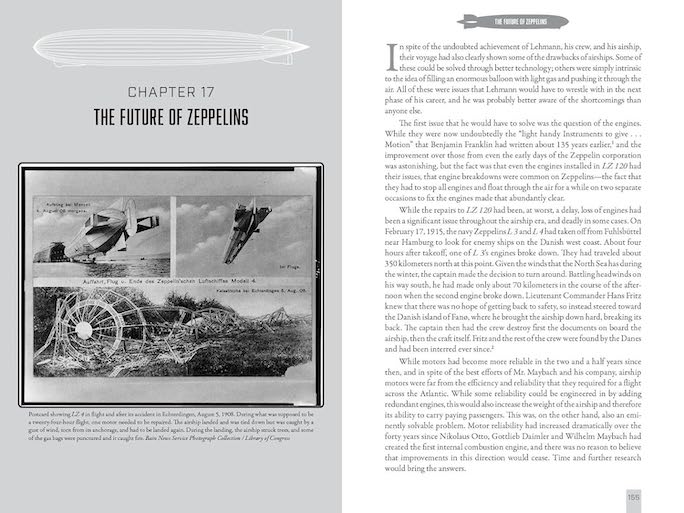
Copyright 2024, Tom King (speedreaders.info).


 RSS Feed - Comments
RSS Feed - Comments
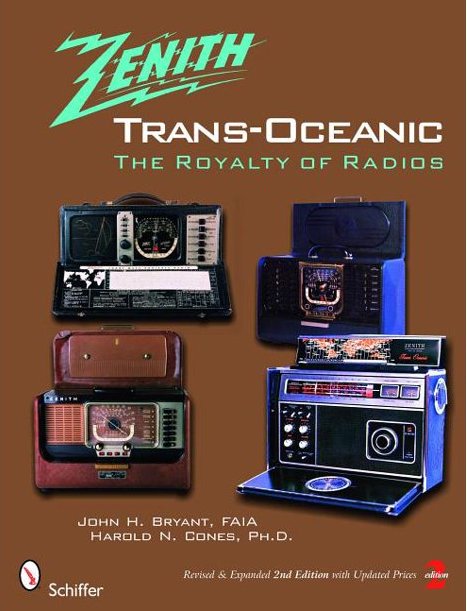







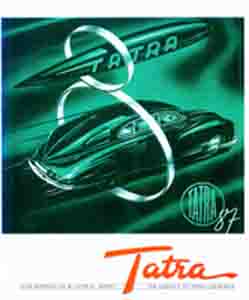


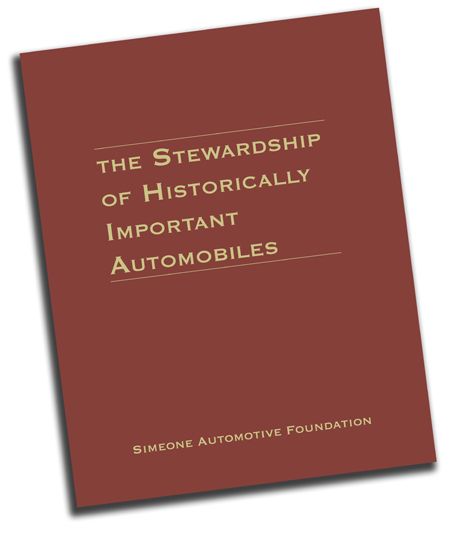

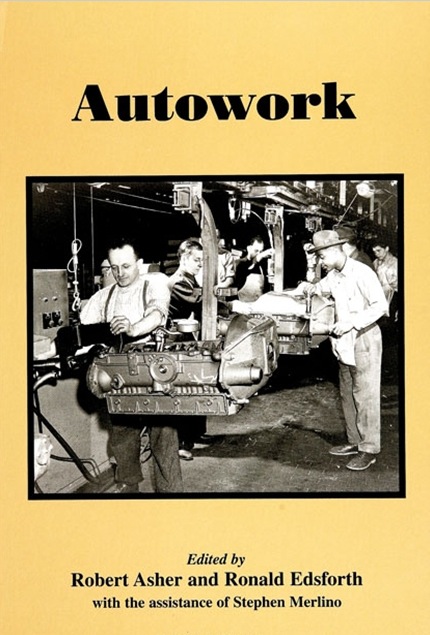
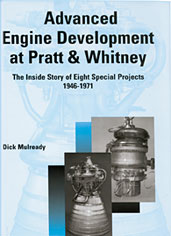





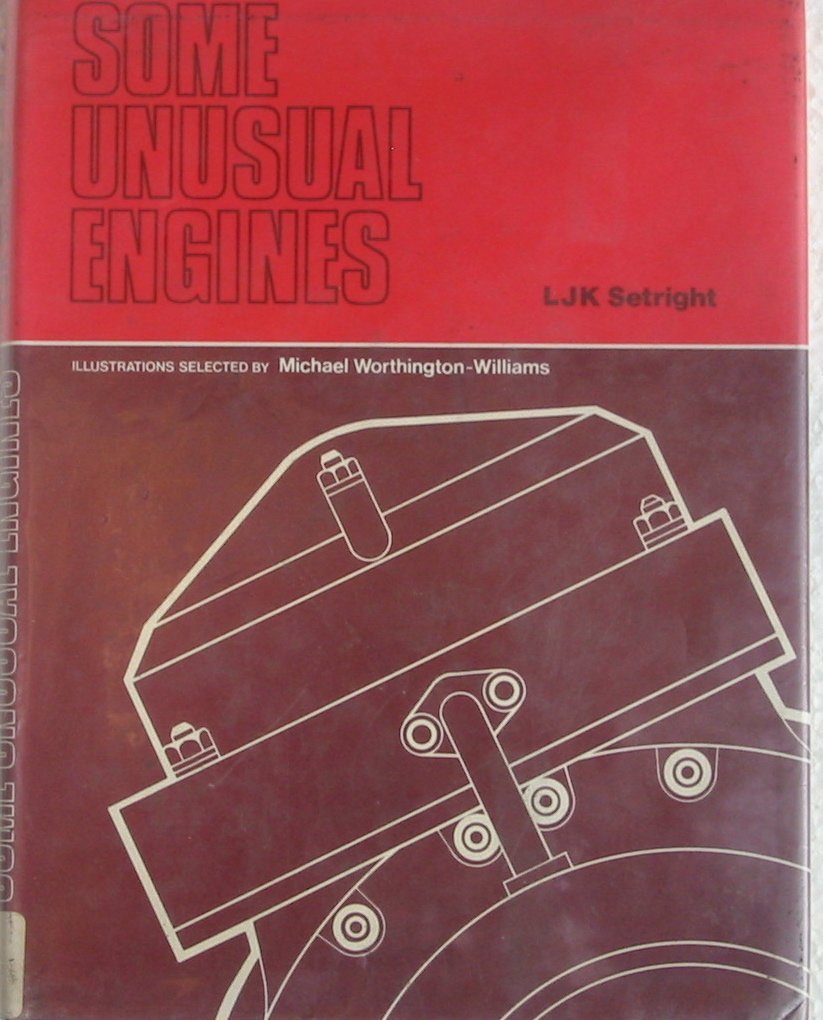

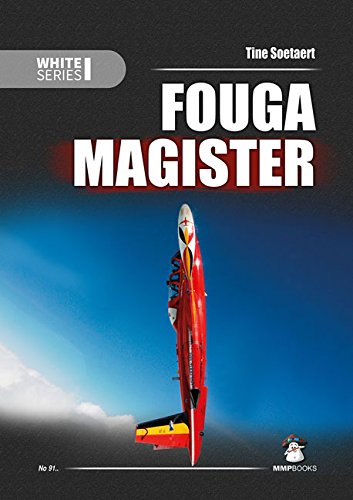




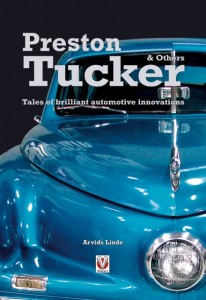



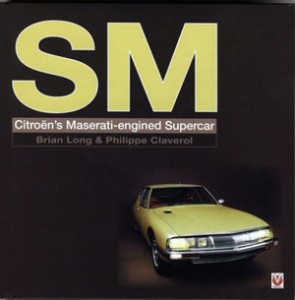

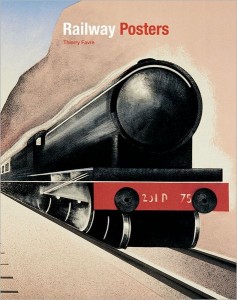
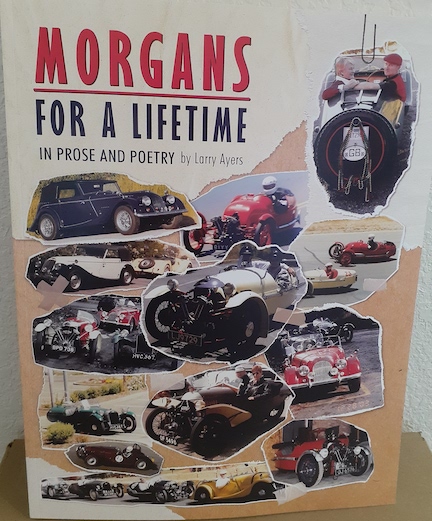
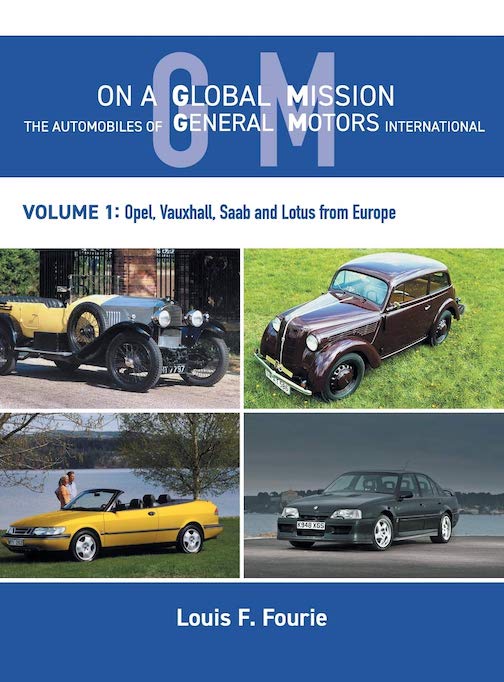
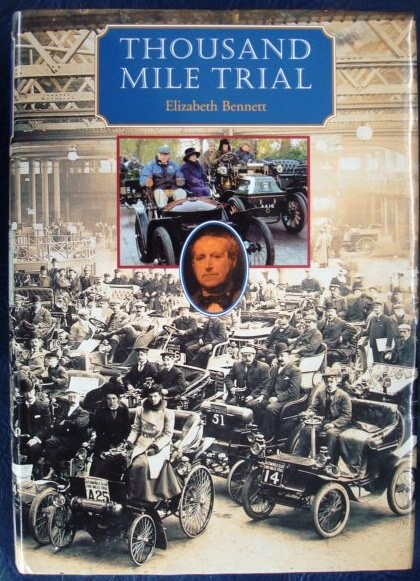








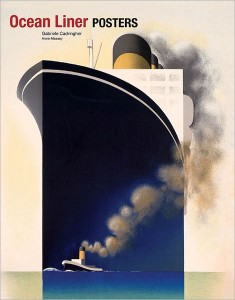

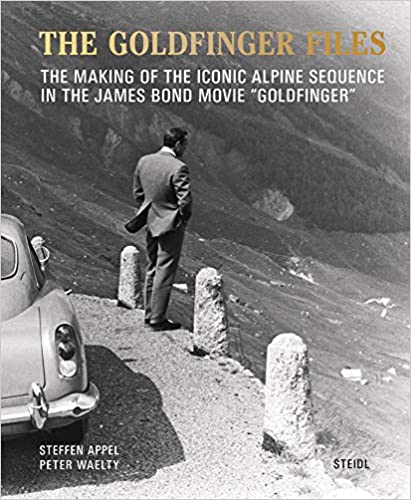

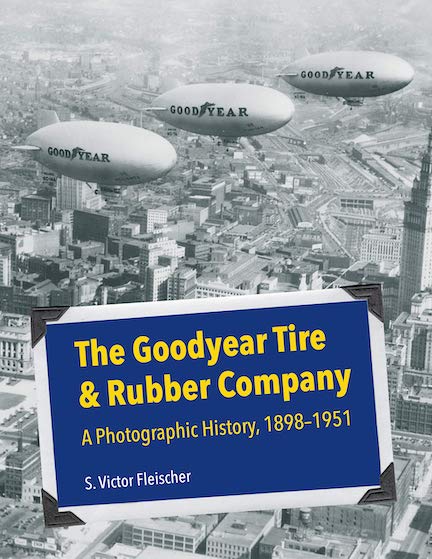
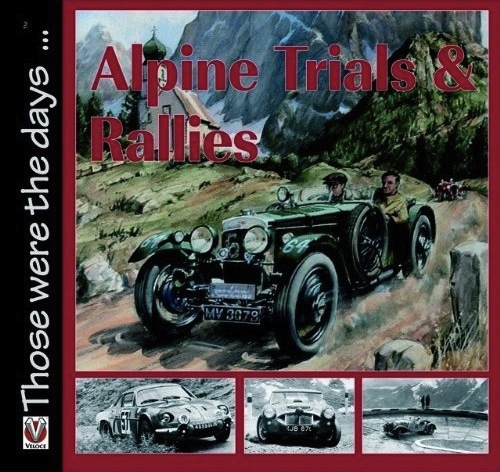


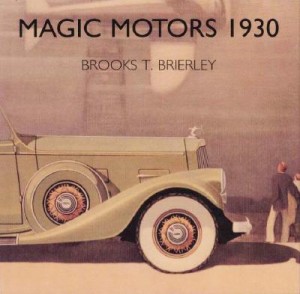



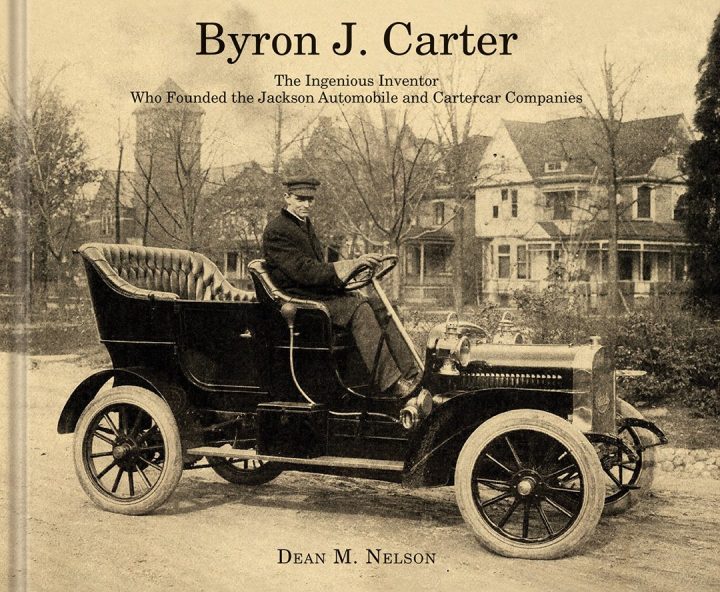







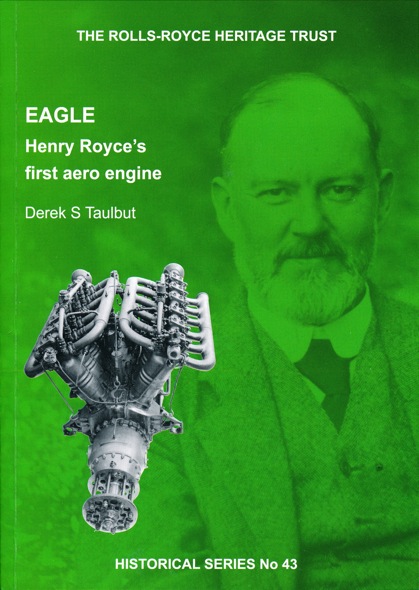

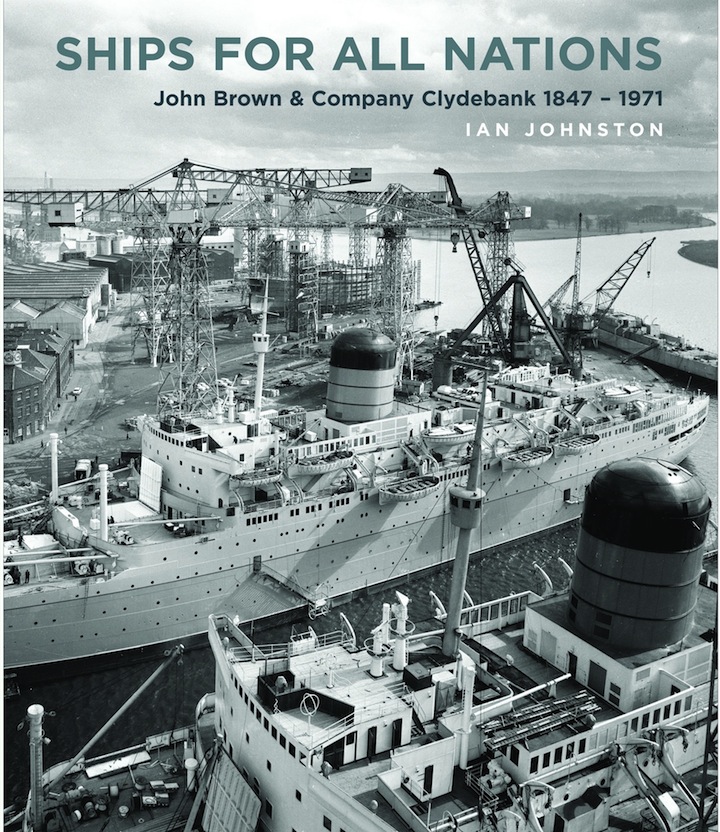
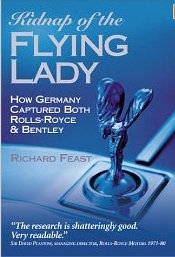

 Phone / Mail / Email
Phone / Mail / Email RSS Feed
RSS Feed Facebook
Facebook Twitter
Twitter